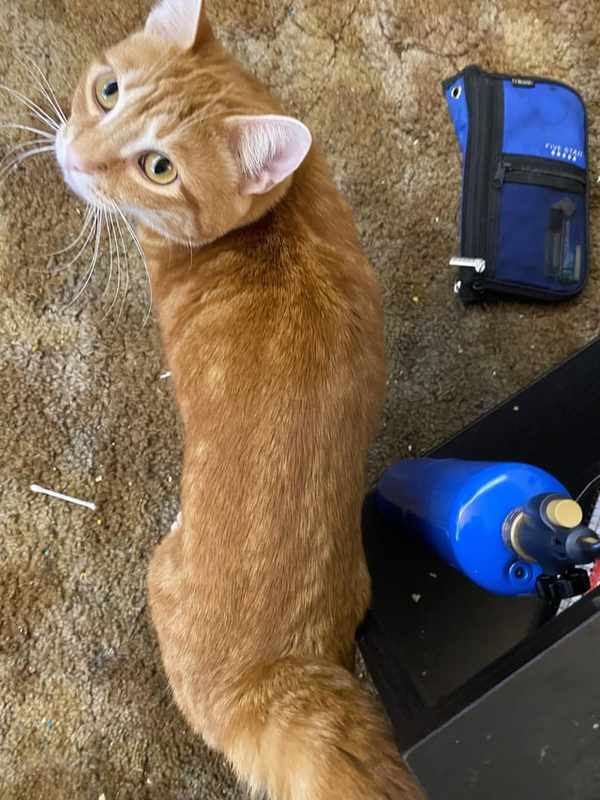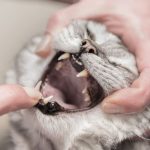Have you ever noticed that some cats seem to eat like they’re starving, yet still manage to maintain a sleek and slender physique? It’s as if they have a secret pact with the universe to defy the laws of nutrition. Cat owners, in particular, are often puzzled by this phenomenon.
Cat Eats But Is Very Skinny: Understanding the Mystery
As cat enthusiasts and pet parents, we want to ensure our feline friends receive the best possible care. However, when we notice a significant discrepancy between their appetite and physical appearance, it’s natural to feel concerned. In this post, we’ll delve into the world of cats that eat but remain skinny, exploring the underlying reasons behind this paradox.
The Importance of Understanding Cat Behavior
Why does this matter? Well, as responsible cat owners, it’s essential to identify potential health issues early on. By grasping the dynamics between a cat’s eating habits and physical condition, we can take proactive measures to ensure their overall well-being. In the following sections, we’ll examine the possible explanations behind cats that eat but remain skinny, shedding light on this intriguing phenomenon.

As we explored earlier, some cats seem to eat like they’re starving yet maintain a sleek and slender physique, leaving us cat owners scratching our heads. While it’s natural to feel concerned about the apparent disconnect between their appetite and physical appearance, understanding the underlying reasons behind this phenomenon is crucial for ensuring our feline friends receive the best possible care.
The Role of Genetics in Shaping Cat Bodies
Cats are known for their unique body types, which can be influenced by genetics. Some breeds, such as Siamese and Abyssinian cats, have naturally slender builds due to their breeding history. When these breeds eat normally, their bodies adapt to their genetic predispositions, resulting in a lean physique that might not necessarily translate to weight gain.
Individual Variations in Metabolism
Cats, like humans, have varying metabolisms that can affect how they process food. Some cats may have naturally fast metabolisms, which enable them to efficiently convert calories into energy, leading to a slender appearance despite eating a normal amount. This variation can be attributed to individual cat characteristics, such as coat type, size, and age.
Environmental Factors at Play
Environmental factors like living conditions, diet, and lifestyle can also contribute to a cat’s physical appearance. For instance, indoor cats may have access to fewer calories than outdoor cats due to reduced foraging opportunities. This disparity can lead to differences in body composition, even if they’re eating similar amounts.
The Importance of Nutrition
Proper nutrition is essential for maintaining a healthy weight and overall well-being in cats. A balanced diet that meets their nutritional needs can help support a slender physique, regardless of their appetite or genetics. As responsible cat owners, it’s crucial to ensure our felines are receiving the right nutrients through their food or supplements.
As we continue to explore this phenomenon, it’s essential to consider the interplay between these factors and how they impact our cats’ physical appearance. In the next section, we’ll delve into common health issues that can affect a cat’s appetite and weight, helping us better understand the connection between eating habits and physical condition.
Consult a Veterinarian for Your Feline Friend
Get expert advice on how to ensure your cat’s health and well-being.
Consult with a VeterinarianIn conclusion, the enigmatic case of cats that eat but remain skinny is not as mystifying as it initially seems. By understanding the intricate relationship between a cat’s appetite and physical condition, we can unravel the underlying reasons behind this paradox.
From an examination of their diet to potential health issues, we’ve explored the various factors contributing to this phenomenon. By recognizing the signs and symptoms, cat owners can take proactive measures to ensure their feline friends receive the best possible care.
In many cases, a combination of factors is at play, making it essential for cat enthusiasts to be aware of these variables. Whether it’s a nutritional imbalance, digestive issues, or underlying health concerns, by understanding the complexities, we can provide our cats with the care they deserve.
As we wrap up this post, remember that every cat is unique, and what may apply to one feline friend might not apply to another. By staying vigilant and attuned to our pets’ needs, we can ensure their optimal health and well-being. So, the next time you notice your cat eating like they’re starving yet still maintaining a slender physique, take heart – it’s just their way of being their fabulous feline selves!
Cat with Bloody Nose Sneezing: Have you ever seen your feline friend sneeze blood? This unusual phenomenon is more common than you think. Discover the possible causes and treatments in this informative post!
Best Fitness Tracker with Oxygen Level and Blood Pressure: Are you looking for a fitness tracker that tracks more than just your steps? Explore the top devices that monitor oxygen levels and blood pressure, helping you stay on top of your health game!



